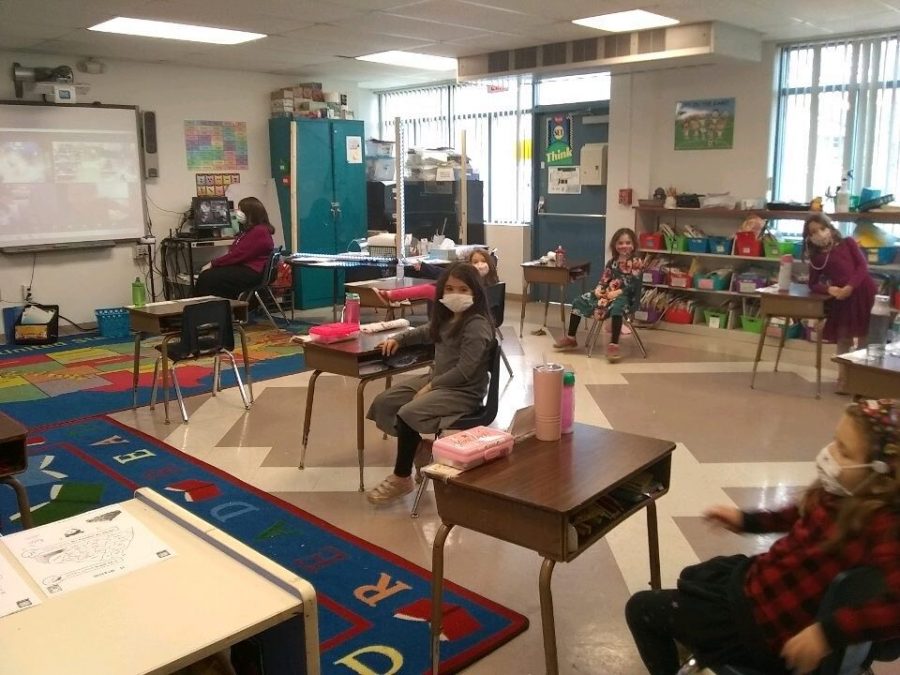Teachers discuss challenges they face during pandemic
Published January 14, 2021
Given the coronavirus, the past year has been really hard on everyone, especially students.
In addition to learning virtually, switching back and forth between Zoom and “normal” school presents a struggle, too. In-person school has been really exhausting for students, teachers and parents alike. Though many people think it’s hardest on kids, teachers are also forced to cope with learning in the pandemic.
Different teachers are choosing to teach in different ways: Some only in person. Some only on Zoom. And some came up with creative hybrids of both.
ADVERTISEMENT
Lisa Elstro is a high school math teacher at Yeshivat Kadimah High School and she only teaches on Zoom. On Mondays and Wednesdays, Elstro teaches from her home, while most of her students have a gap between some classes to go to their homes and prepare for her class.
“I think it’s easier for everyone to (go) home so that way they can have all their materials at home and they can be in their own spaces, which is more comfortable and easier to do,” she said.
Elstro has a whiteboard set up in her room — that way she is ready to teach math and other subjects.
“I definitely miss being around the students and being able to see all the other teachers, but this has been a pretty close second,” said Elstro.
She has been pretty lucky with Zoom. She’s never had to cancel class because of a bad internet connection.
ADVERTISEMENT
“In the beginning we had a few internet issues on my end, but then we were able to upgrade our internet and that helped,” said Elstro. Still, every once in a while, Zoom learning lags. To help in such instances, she’s employed her own methods to ensure everybody is paying attention.
“I usually try and call on people at random times, so it makes it a little bit easier for them to stay focused,” she said.
Roz Hirshhorn is a first grade teacher at H.F. Epstein Hebrew Academy. She teaches in person, but also has some kids on Zoom.
“I’ve gotten used to having some kids on Zoom and some kids in the classroom. I think it’s easier for the kids to be in the classroom as long as it’s safe to be there,” said Hirshhorn.
She does everything she can to make the kids at home feel as though they were in class.
“We try to do the same activities,” she said. “We share the screen. They can take part in what we are doing, and there are so many things that can be done digitally now.”
Hirshhorn puts a lot of effort into making sure the kids on Zoom have everything they need for class. In her many years of teaching, hybrid learning has definitely been one of the biggest challenges for her.
“Wearing a mask: it’s challenging. You can’t hear the kids read, you can’t see their expression, when they are reading to you,” said Hirshhorn.
Aside from schooling itself, maybe an even bigger struggle is keeping a distance between young students.
“It’s hard as a teacher because you have to show them a page, you have to show them the place,” said Hirshhorn.
Being a teacher for little kids can be even more taxing. Unlike older kids, younger ones often yell from the computer and in the classroom. But in Hirschhorn’s words: “It’s not stressful, it’s a challenge.”
Justin Zahller is a high school science teacher at Mary Institute and St. Louis Country Day School (MICDS) and teaches only on Zoom.
“Just as [COVID cases] were starting to ramp up nationally, our school went on spring break,” said Zahller.
MICDS hoped that COVID would be under control after the school’s two-week break. But it ultimately had to cancel school events and put students on Zoom for the rest of the year.
“When I saw my students the Friday before spring break, that was the last time I taught them in person that year,” said Zahller.
He has many reasons why he prefers teaching in person, including familiarity. “At first, nobody knew how to use Zoom, and they didn’t have a chance to plan how to change everything,” said Zahller.
Teaching in person is ideal for most, but currently, it is not as safe as before the pandemic.
“It feels a little unnerving because there’s still a lot of virus circulating in the community, although school has tried a lot to minimize exposure,” said Zahller.
Even though in-person school can be unsettling, it’s widely debated if it’s worth the risk for the sake of a better education.
“It’s much harder to make a connection online, especially if I compare this year to last year,” said Zahller. “I didn’t know any of my students at the beginning of this year. Last year, I had the opportunity to work with kids I already had a relationship with.”
Though it may be difficult now, this pandemic is forcing a shift in American education. Once this is all over, school will return to being in-person, but some new strategies will likely be implemented based on what educators have learned during the pandemic.















